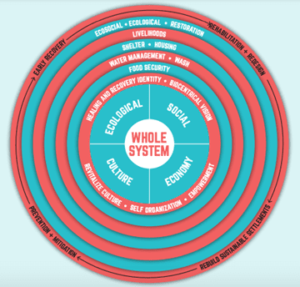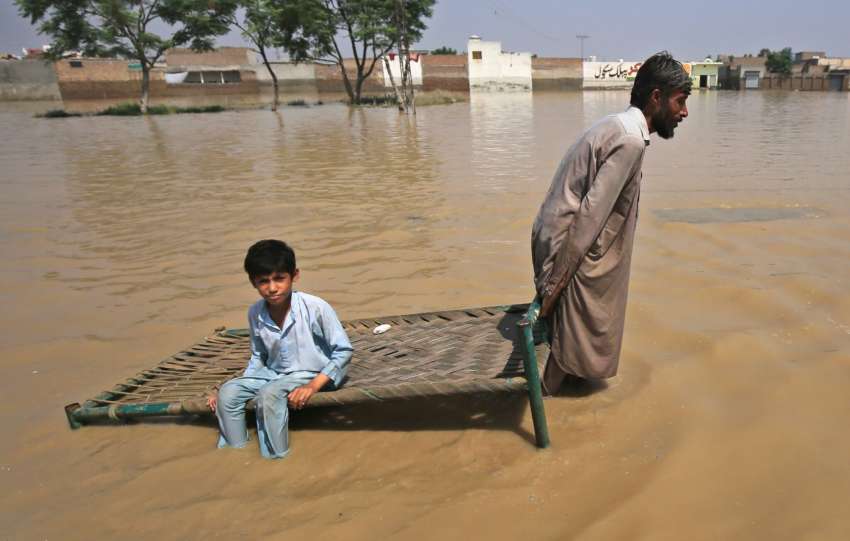The Ecovillage Design Education 2022 edition continues. After the social dimension of regeneration, we dive into the Ecology and Economy of sustainable communities. Concepts such as Permaculture Design, Soil Regeneration, Food Security, and Climate Emergencies have been developed to train new ecovillage designers to build strong and resilient eco-community projects in the future.
What is Permaculture Design?
Permaculture Design is a philosophy, a way of living, and not a religion. It has been developed in Australia by Bill Mollison and David Holmgren with 3 ethics – take care of the earth, of humans, and fair trade – and 12 principles in the « Permaculture manual », a reference worldwide. They have been inspired by Masanobu Fukuoka, a Japanese farmer who was the first one to deliver great productions without pesticides, using only natural techniques based on his observation and interaction with nature.
“The greatest change we need to make is from consumption to production, even if on a small scale, in our own gardens. If only 10% of us do this, there is enough for everyone. Hence the futility of revolutionaries who have no gardens, who depend on the very system they attack, and who produce words and bullets, not food and shelter.” – Bill Mollison, co-founder of Permaculture
Agriculture vs Permaculture, by @BrennaQuinlan pic.twitter.com/4onUg1QAzV
— LocalScale (@localscale) April 20, 2021
Permaculture Design is a process that includes all that is essential to build sustainable and regenerative human settlements. From Energy renewables to water purification systems, carbon cycle, soil regeneration for food production, ecological building techniques with green roofs, compost toilets, and waste management.
Why Green building and Holistic Architecture?
Since the 1940s, the concept of eco-construction, or green building, emerge in order to create houses more in line with our environment, which respect ecology at each step of the making process and during the use of the house (heating, energy consumption, various flux release: water, waste, use of only natural and local materials) so their impact is not neutral but positive for the environment. It all started with reading about the local landscape and feeling the earth and the water in a holistic approach that takes into account the social, cultural, and economic aspects of the land as well as the needs of the community.
Creating food integrated into our homes for example would not only reduce transport pollution but also capt carbon with food forests offering better climate conditions. In case of collapse or food security emergency, the ecovillages that are self-sustainable in their consumption will suffer less perturbation. Various ways to grow food are today possible, in Earthships, Tiny Houses build in agroforestry systems or in a bigger scale such as Albert Bates is doing at The Farm, the USA with the use of biochar.
The bountiful benefits of #biochar https://t.co/v3pBMnOnO6#savesoil pic.twitter.com/hos2lMwbTr
— Crop Nutrition Lab (@Cropnuts) June 10, 2022
At the heart of the Solar Test Field in Tamera Ecovillage, Portugal is the kitchen that feeds 50 people using solar technologies, including a Scheffler Mirror, biogas system, solar box-cookers, solar water heaters, and a solar tunnel dryer for food preservation. This can be built anywhere in the world.
“Every moment on the Earth, the sun radiates 15,000 times more energy than the entire needs of humankind. In our solar kitchen, we’re experiencing this reality of energy abundance, as we’ve decided to accept this gift we’re constantly receiving.” – Janos Valder
Ecovillages aim to access food, shelter, water, and energy in ways that respect the cycles of nature. They aim to integrate humans with the rest of nature in ways that increase biodiversity and regenerate ecosystems, and that gives people a chance to experience their interdependence with systems and cycles of life on a direct and daily basis following those principles:
> Grow seeds, food, and soil through regenerative agriculture
> Clean and replenish sources and cycles of water
> Move towards 100% renewable energy and transport
> Innovate and spread green building technologies
> Work with waste as a valuable resource
> Increase biodiversity and restore ecosystems
How are the Climate emergencies strategies saving communities?
Disasters triggered by climate change are responsible for some 150,000 deaths every year and cause millions of people to seek refuge elsewhere. The Intergovernmental Panel on Climate Change (IPCC) predicts 150 million environmental refugees by 2050. In 2015, 19,2 million people in 113 countries were displaced by environmental catastrophes and about 8,6 million by conflict and violence.
Given these realities, providing basic needs like food and water will be challenging, placing populations around the world at severe risk. We live on a planet in an emergency, where catastrophe, crisis, and conflicts multiply day by day. Those internally displaced living in camps often have to survive on inadequate humanitarian assistance, with few opportunities for self-organization or self-reliance, living on the margins and being routinely overlooked by national sustainable development programs.
Ecovillages have been recognized as models in the United Nations climate negotiations to inspire countries to become more sustainable and resilient to the upcoming climate changes. They have spent decades researching collaborative and interlinked ways of social, ecological, cultural, and economic regeneration and offer solutions and tools that can be quickly adapted during emergencies.
2,700 billionaires have more than 7 Billion people
Many announcements of civilization unbalance and risk of collapse have created the Regenerative Conscious Economies we know today. In ecovillages, we can find very different kinds of economic models, equally great, just different, with more or less shared ownership, all aiming for global decentralization with the principles below:
> Reconstruct the concepts of wealth, work, and progress
> Commit to responsible production, consumption, and trade
> Cultivate social entrepreneurship for local regeneration
> Increase economic justice through sharing and collaboration
> Ensure equitable access to land and resources
> Use banks and currencies that strengthen communities
Some communities like Tamera in Portugal share all income: money from community businesses or personal work goes to a common pot. In this case, all members’ basic needs are met by the community. Most decisions on how to earn, spend, and invest, are made together. Members often get an equal allowance or pay on top of their housing, food, etc.
In other communities like Findhorn in Scotland, the income is independent. Members earn, spend, invest, borrow, and loan however they want. Members are responsible for meeting their own needs and may a joining fee and annual dues to resource the shared aspects of the community.
In Damanhur Ecovillage in Italy, the economic system changed many times so it can help the community in flexible ways. Nowadays, each member can have his personal business and give a part to the community. Community time banks permit to equally share the responsibilities and give the members social health security which includes a plan for when they retire or have financial difficulties. A local currency has also been created to facilitate the exchanges inside the community such as goods and services.
Success stories from Ecovillages
Most ecovillages produce various goods such as organic food, and healthcare products and offer different services from accommodation to learning experiences and courses. Angsbacka Ecovillage in Sweden for example lived from events like festivals and retreats for 40 years.
Zegg Ecovillage in Germany managed to be the owner of its lands after 20 years. More than 3 million euros have been invested until today to build the site. A limited liability company (GmbH in German) was created to monetize the seminars organized internally and externally. They don’t have a local currency, euros that are earned are redistributed within the community for renovations, food, and also salary allocated to residents. Due to their status as members, they don’t pay other taxes. In exchange for their 20 hours of work on average in the different groups of the community, residents are remunerated to pay their rent and various personal expenses.
Auroville in India has one of the most settled economic systems and permits 3000 Aurovillians to have all their needs met after 50 years of existence. The intention of making Auroville a money-free society with no private ownership has been manifested into a big association of more than 100 diverse social enterprises and businesses. All members receive credits each month to pay for their basic needs inside the community.
“You never change things by fighting the existing reality. To change something, build a new model that makes the existing model obsolete.” – Buckminster Fuller
Ecovillages are thriving all around the globe and invent flourishing models of economies based on where they are in the world. In order to be more resilient and face difficulties, they build partnerships and alliances globally and locally in their bioregions.
Rethinking concepts of work, wealth, and progress
A game to rethink our relationship with the Economy has been created by 5 of the 2022 Ecovillage Design Education students. If you are interested to play CO·RE Game, contact us at coregame@leta.design
Find out about the Global Ecovillage Network learning platform, Ecovillages on Instagram, find your ecovillage worldwide or attend the new EDE course in October 2022.
FEATURED IMAGE: via Victor Bravo Lobo – Ecovillages Worldwide



